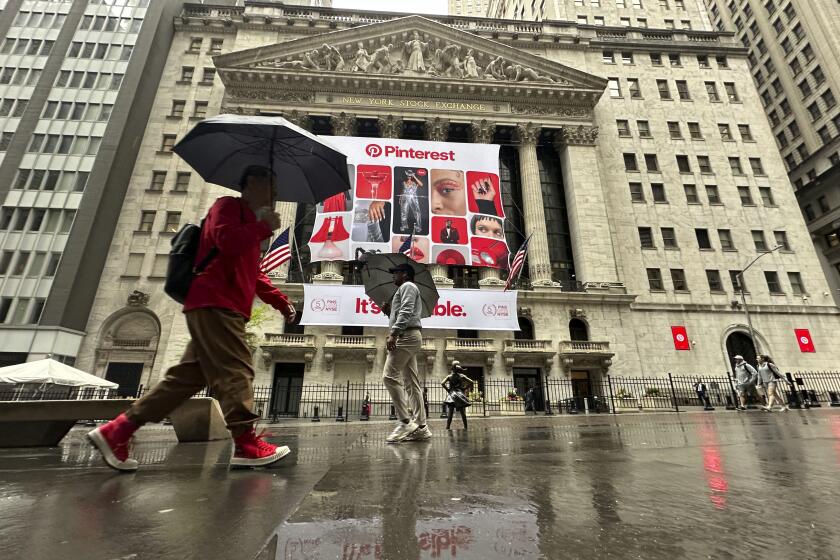Firm Defaults, Ends Payments to Injury Victims
Scores of injury victims who were guaranteed medical and living expenses in out-of-court settlements have seen their payments suddenly cut off due to the loss of a fortune in bonds that had provided their support.
The financial collapse, which threatens to engulf a string of blue-chip Wall Street firms in litigation, affects about 200 victims in California and other states, who together are owed $118 million in structured settlements for physical injuries or other harms, according to a lawyer for the firm that has defaulted on the payments.
The first inkling of trouble came in mid-November, when Settlement Services Treasury Assignments Inc. of Rhode Island, the firm responsible for the payments, failed to mail settlement checks, according to lawsuits and interviews.
Victims later discovered that the Treasury bonds, which generated the interest used to pay them, had been secretly taken out of trust as long as five years ago and used as collateral for loans. According to interviews and documents, the lender, Morgan Stanley Dean Witter, declared the loans in default and sold the bonds in 1998 to recover its losses.
Because Settlement Services went on distributing checks until November, injury victims and their lawyers until then were none the wiser.
Steve Hogan, a lawyer for Settlement Services, said the firm’s principals, Charles E. Bradley Sr. of Connecticut, and his son, Charles E. Bradley Jr. of Orange County, had not broken any laws or agreements in pledging the bonds to obtain loans. “It is their intention to pay every penny that is owed to these people,” Hogan said.
A Morgan Stanley spokesman declined to comment.
Plaintiffs’ lawyers described some of the victims as widows and orphans. “This is one of the worst cases I’ve ever seen of consumers being taken advantage of,” said Thomas Foley Jr., a Santa Barbara lawyer who filed a fraud suit this week in Los Angeles County Superior Court that seeks class-action status for the victims.
“These are people who were injured in auto accidents [and] accidents on the job,” and “for them not to get their checks is devastating,” Foley said.
Martha Torbitt, a Santa Barbara widow in her 70s, said she thought her bank was in error when it claimed her November payment had not arrived. When she learned the truth, “I was beside myself,” said Torbitt, who lives on the twice-yearly payments from a settlement in the 1980s when her husband was seriously injured in a traffic accident.
Marion Householder of Agoura Hills said the sudden loss of settlement payments has “caused tremendous distress” for her family, which has lived on a settlement reached in the 1980s, when her husband, Ronald Householder, then a motorcycle officer with the Hawthorne police, suffered severe head injuries in a crash.
With the cutoff of funds, “I can go maybe another month and then I’ll have to borrow against my house or my retirement,” she said.
At least two lawsuits are pending and several more will soon be filed against a string of high-profile defendants--including Morgan Stanley, Bankers Trust Co., and Merrill Lynch & Co. Other defendants include a host of individuals and firms that played some oversight role.
The case is sending shivers through the structured settlement industry, a niche business that depends on the confidence and faith of plaintiffs and defendants.
In a typical case, the structured-settlement firm will invest settlement proceeds in U.S. Treasury bonds or insurance annuities. The interest is used to make twice-yearly payments for a period of 20 to 30 years--at the end of which a final lump-sum payment is made.
The return earned on the investment allows the defendant to spend less than with a single lump-sum award.
For the plaintiff, the advantage is a consistent stream of income and more favorable tax treatment than would be available with a lump sum.
The bonds or annuities are to be held in trust for the sole purpose of compensating claimants. But for reasons that remain to be fleshed out in litigation, that is not what happened in this case.
Many of the settlements in default were reached in the 1980s. They were set up by a Merrill Lynch affiliate known as Merrill Lynch Settlement Services Inc. or by a firm called Ibar Inc., which later sold its stock to the Merrill Lynch affiliate in 1982.
A brochure for the Merrill Lynch Settlement Services, filed as an exhibit in court, said clients would be drawn to “the respected name of Merrill Lynch.” which “inspires the confidence of plaintiffs and their counsel.”
But Merrill Lynch, named in both pending lawsuits, sold most of its stock in the business in the late 1980s and the remainder in 1991.
“The problems that have arisen occurred almost a decade after Merrill Lynch sold this business,” said company spokesman Bill Halldin. “We’ve had absolutely no involvement in the actions that have caused these problems.”
According to court papers, the successor to the Merrill Lynch firm became known as Settlement Services Inc. and later as Settlement Services Treasury Assignments Inc., operated by a Rhode Island businessman named Jonathan H. Pardee.
Over the years, various banks had acted as trustee, holding the bonds and mailing payments to the claimants.
Records show that in July 1995, Pardee signed a new trust agreement with Bankers Trust Co. of New York, which appeared to provide wide latitude for use of the bonds. Among other things, it gave authority “to borrow money from any lender and . . . in connection with such borrowings . . . [to] pledge assets held by the trustee.”
Pardee did not return phone calls. A lawyer for Bankers Trust also could not be reached.
According to Hogan, Pardee in 1997 sold Settlement Services to Stanwich Financial Services Corp., a company controlled by the Bradleys. By then, Hogan said, Pardee already had used the bonds as collateral for loans. It was the flexibility to do that that attracted the Bradleys in the first place, Hogan said.
“That’s why [Stanwich] bought” Settlement Services, Hogan said. The Bradleys thought borrowing against the bonds “was a perfectly legal and appropriate thing to do. . . . That was their interest in buying the company.”
But Settlement Services lost the bonds in March 1998, according to an information sheet the company has mailed to its devastated clients. The sale of the bonds “was not initiated by [Settlement Services], but by Morgan Stanley over [Settlement Services’] protest,” the paper states.
The Bradleys, said Hogan, know this has caused a hardship to people” and are “doing what they can to free up assets so these people can be paid.”
Attorneys said a major issue will be whether Bankers Trust and Morgan Stanley investigated the origin and purpose for the bonds.
Another question is “what’s become of all this money,” said Dennis P. Conner, a Montana lawyer for one of the victims.






